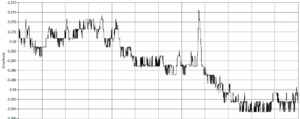Lena/Aug 2016: Difference between revisions
| Line 27: | Line 27: | ||
=== Alkali vapor cells sources === |
=== Alkali vapor cells sources === |
||
| ⚫ | |||
Asked around to find who could make some paraffin-coated cells for us. Dima's sources: |
Asked around to find who could make some paraffin-coated cells for us. Dima's sources: |
||
| Line 35: | Line 36: | ||
* Precision Glass Blowing (had poor T1) |
* Precision Glass Blowing (had poor T1) |
||
| ⚫ | |||
Asked Vitaliy Shutov from Frequency Standards Lab in FIAN, Troitsk. They have a setup that produces the cells in small (~10) batches. The cells are baked and sealed under vacuum and don't have stems. Cells can be filled with any gas mixture, but they don't make coating. The cells come in two sizes |
Asked Vitaliy Shutov from Frequency Standards Lab in FIAN, Troitsk. They have a setup that produces the cells in small (~10) batches. The cells are baked and sealed under vacuum and don't have stems. Cells can be filled with any gas mixture, but they don't make coating. The cells come in two sizes |
||
Revision as of 15:45, 30 August 2016
August 2016
08/15/2016
NURI paper
Talked to Dima about the NURI magnetometer network paper. His comments:
- The device section describes a solution without a problem. Add to the introducion:
- need for the accurate timing
- need to correlate signals from the different sensors
- magnetometer has to be portable
Mx magnetometer sensitivity
Talked to Thad about a possibility to have a synchronously pumped scalar Mx magnetometer in the fMCG project. The advantages would be:
- not having to cancel the field
- no calibration
- no 1/f electronic noise
Disadvantages:
- spin-exchange relaxation
- no vector sensitivity
Calculations for an Mx magnetometer built with a paraffin-coated 1cm3 cell show that it should be possible to get around 3 fT/sqrtHz per 1cm of the probe length.
- Download the Mathematica notebook - File:ScalarMagnetometerParaffinCells.zip
Alkali vapor cells sources
Asked around to find who could make some paraffin-coated cells for us. Dima's sources:
- Misha Balabas ($500-$700 per cell)
- Antonie Weis (sells 20x20mm cells that they no longer use)
- Wenhao's group (can make cells or fill cells)
- Precision Glass Blowing (had poor T1)
Asked Vitaliy Shutov from Frequency Standards Lab in FIAN, Troitsk. They have a setup that produces the cells in small (~10) batches. The cells are baked and sealed under vacuum and don't have stems. Cells can be filled with any gas mixture, but they don't make coating. The cells come in two sizes
- 8x15mm
- 5x3.5mm
Velichansky's group also has a stash of paraffin-coated 20x20mm cells.
08/30/2016
The magnetometer can take the vector measurements in two channels: X and Y. The Y is orthogonal to both pump and probe, and provides the sensitivity to the main direction at DC, while the X direction signal is demodulated at 1kHz. An LabVIEW filter in FPGA is setup to separate the two signals. The Y signal is obtained by low-pass filtering the signal with two 2-order Butterworth filters, while the X signal is obtained by multiplying the time signal by a reference and low-pass filtering it by the same filters.
The problem is that the Y channel often has large digitization noise (see the picture). The digitization noise disappears when one of the Butterworth filters is deleted (but then the filtering is insufficient).

